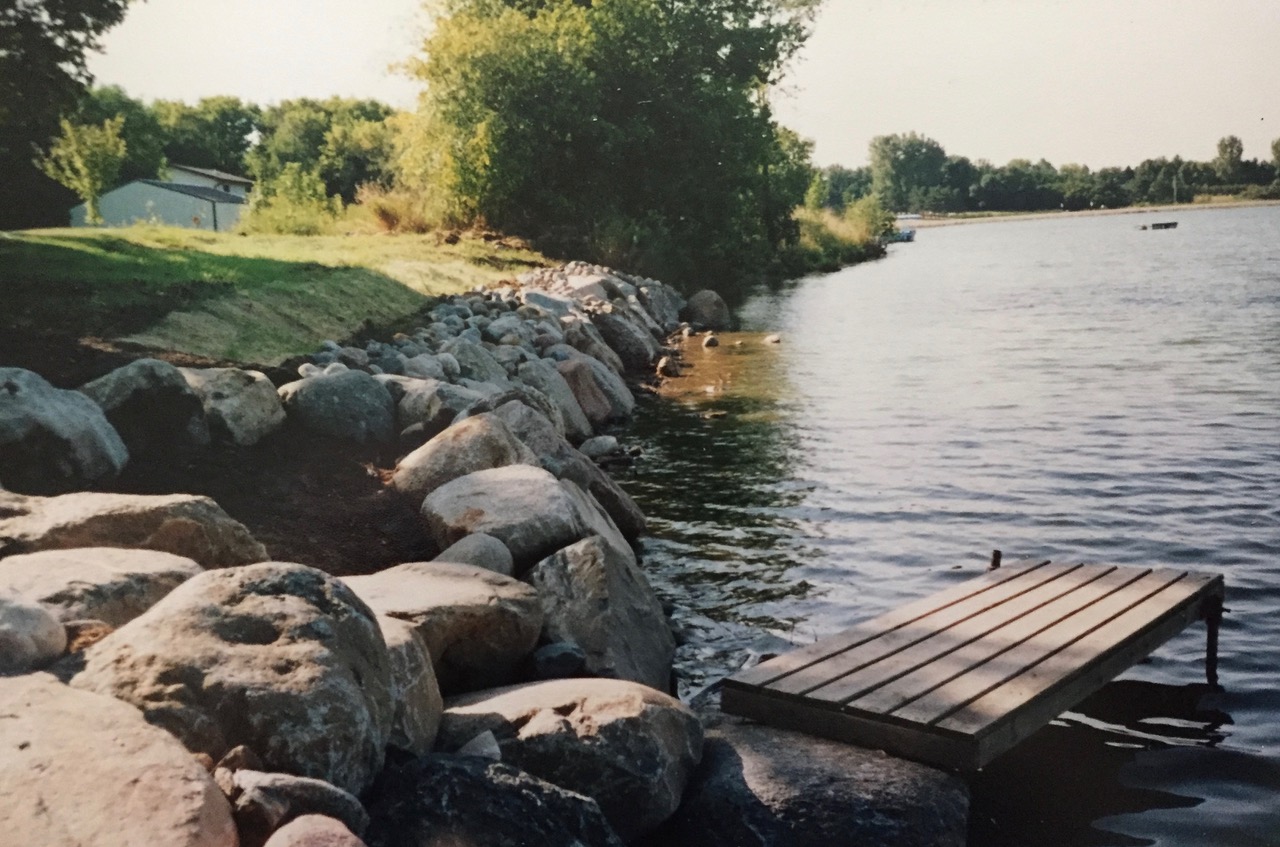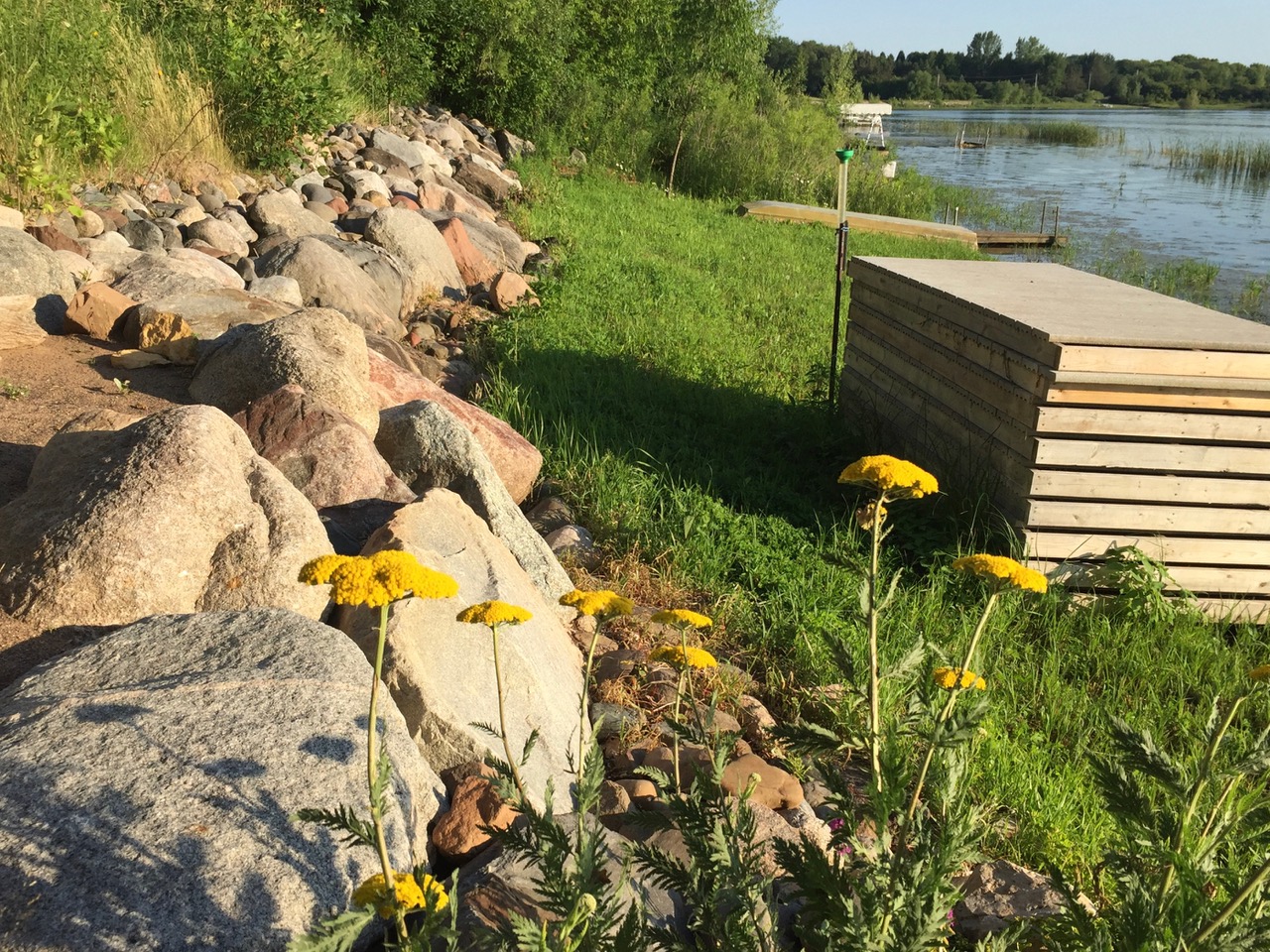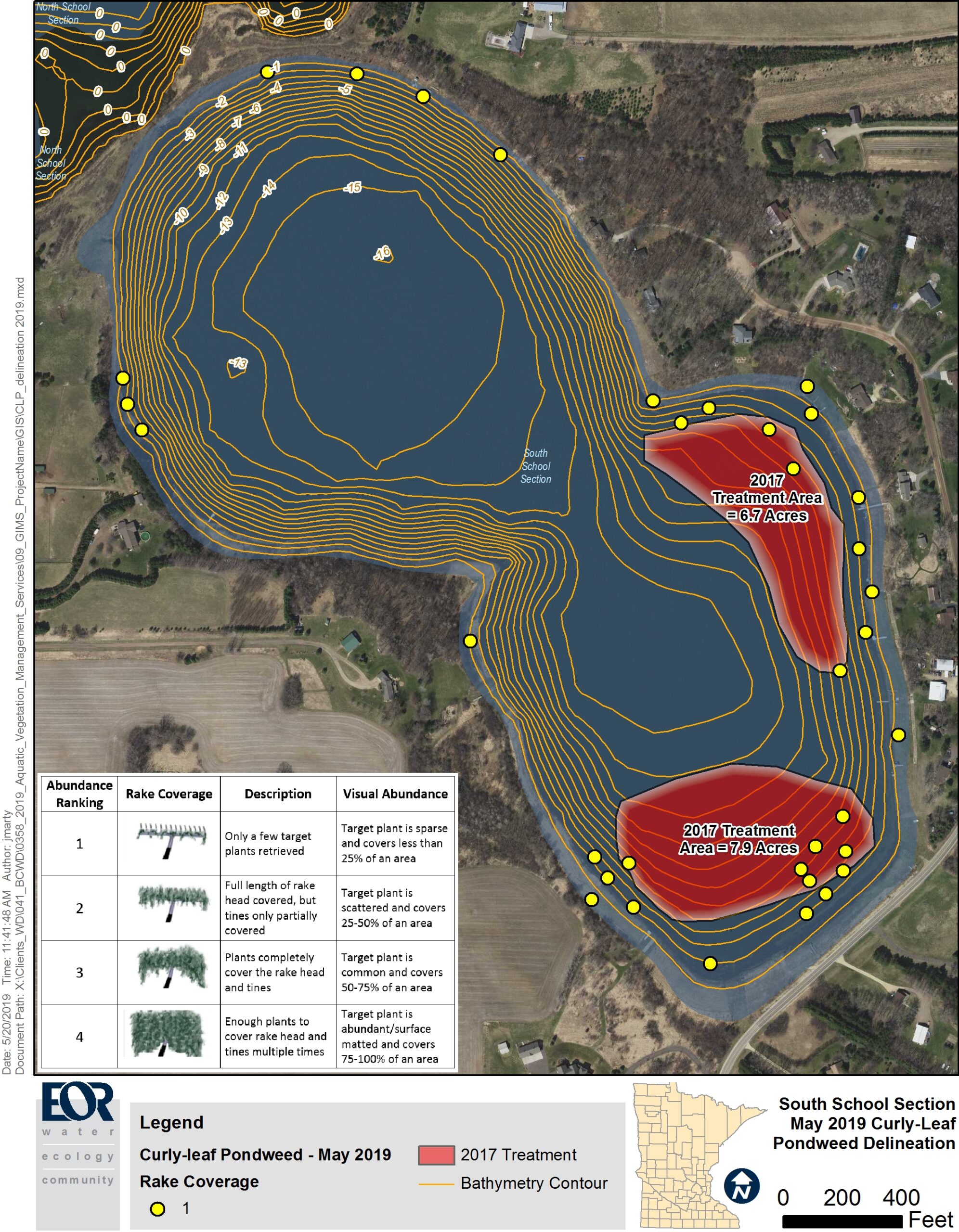Invasive Weed Management
Since the 2017 treatment for Curly-leaf Pondweed, a 2018 vegetative survey found that there was no need for treatment in 2018. See below for a copy of the survey and summary.
In 2019, a vegetative survey was completed and the DNR agreed that no herbicide treatment is needed this summer either. Check out the 2019 vegetative survey below for more information.
Curly-leaf Pondweed in South School Section
What is curly-leaf pondweed?
Curly-leaf pondweed is a non-native, invasive submersed aquatic plant that was first observed in Minnesota in about 1910.
What can be done to prevent its spread?
The most important action is to remove all vegetation from your watercraft before you move it from one body of water to another.
How to identify it?
Curly-leaf is similar in appearance to many native pondweeds commonly found in Minnesota waters. It can be distinguished from other pondweeds by its unique life cycle. It is generally the first pondweed to come up in spring and dies in mid-summer.
Why is it a problem?
In spring, curly-leaf pondweed can interfere with recreation, producing dense mats at the water’s surface, as well as displacing native aquatic plants depended upon by fish and their food sources. In mid-summer, curly-leaf plants usually die, and dying plants accumulate on shorelines. There is some evidence that it is negatively impacting the water quality of South School Section Lake.
What can be done?
Past experience in Minnesota and elsewhere has shown that eradication or elimination of curly-leaf pondweed from lakes is not a realistic goal. Problems caused by curly-leaf can be managed using available methods of control. Dense mats of curly-leaf that interfere with use of a lake can be reduced by mechanical harvesting or treatment with herbicide.



